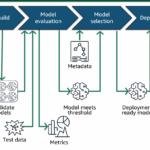When investors ask about technical debt, the conversation usually points to code. How many lines are legacy? How brittle are the tests? How old is the stack? But in my 20 years of building and scaling engineering teams, I’ve learned that the heavier tax on velocity and resilience often hides elsewhere: documentation debt. You won’t find it on GitHub. It rarely makes it into a board deck. Yet it silently drags onboarding, slows releases, and turns every handover into a gamble.
What Documentation Debt Looks Like
The Hidden Tax
The effects are easy to recognize once you’ve lived them:
Onboarding takes months instead of weeks. New hires spend their first sprints reverse-engineering how things work.
Senior engineers act as “walking wikis.” Instead of focusing on building, they spend half their time explaining.
Decisions get re-litigated. Without records of why a choice was made, the team circles back to the same debates.
I once joined a scale-up where the architecture diagram on the wiki was two years old. Every service name had changed. The actual system had grown twice as complex. For the first month, new hires printed that diagram and scribbled corrections just to make sense of what they were running.
Common Symptoms
Architecture diagrams that look polished, but are hopelessly outdated.
Confluence pages abandoned after a single sprint.
Runbooks that don’t match what’s deployed in production.
Jira tickets linking to Google Docs that no longer exist.
None of this looks dramatic on day one. But over quarters and years, it compounds.
Why Documentation Debt Hurts More Than You Think
Onboarding Drag
A well-documented codebase lets engineers ship in days. A poorly documented one? I’ve seen six- to nine-month ramp times before new hires contribute meaningful code. Investors read that as a red flag: if you can’t onboard fast, you can’t scale.
Resilience Risk
When only one engineer understands how the authentication service works, downtime risk is multiplied. If that person is on holiday, you’re one incident away from a board-level crisis. The “bus factor”, how many people can disappear before a project stalls, is directly tied to documentation.
Hidden Cost
tudies back this up. Research by IDC and Stripe found that developers spend up to 30% of their time searching for or recreating information that should have been documented (Stripe: The Developer Coefficient). That’s not “nice-to-have efficiency.” That’s millions in productivity burn.
Documentation debt is a silent tax. It doesn’t trigger alerts like failing builds, but it eats velocity all the same.
Best Practices to Keep Documentation Alive
1. Treat Docs as Code
The best teams I’ve worked with version-control their docs. Architecture overviews, onboarding guides, ADRs, all live in Git alongside code. Every change goes through pull requests.
It sounds obvious, but the discipline matters: if code review is mandatory, doc review should be too. The moment docs drift outside the development flow, they rot.
Tooling tip: MkDocs or Docusaurus make it easy to keep docs in the repo and auto-publish them.
2. Automate What Can Be Automated
Not everything should be written by hand. Some of the most valuable docs can be generated:
API specifications: Generate OpenAPI or GraphQL schemas directly from code.
Infrastructure diagrams: Auto-sync from Terraform or Kubernetes manifests (InfraMap is a good example).
Test coverage reports: CI/CD can publish these automatically.
The less manual effort required, the lower the chance of drift.
3. Adopt “Living” Architecture Docs
I’m a strong advocate for Architecture Decision Records (ADRs). They are lightweight markdown files that capture the “why” behind a decision. They don’t have to be essays, a paragraph is often enough.
Months later, when someone asks, “Why did we go with Postgres instead of DynamoDB?” and the answer is there. Without ADRs, the answer is usually “Because Alice said so,” and Alice might have left.
For example: adr.github.io has a simple template and history of the practice.
4. Make Documentation a First-Class Citizen
Documentation should be part of the Definition of Done. If the feature is shipped but the runbook isn’t updated, it’s not done.
Some teams allocate explicit sprint capacity like 5–10% of points dedicated to doc upkeep. Others tie documentation health to team OKRs.
What matters is signaling: docs are not “extra.” They’re an engineering artifact.
The Investor & Founder Lens
For Founders
Good documentation scales your team. It lowers onboarding time, reduces firefighting, and keeps engineers focused on delivery. That compounds into faster feature velocity and happier staff.
For Investors
Documentation maturity is a proxy for scalability. When I assess teams, I ask a simple question:
“If two senior engineers resigned tomorrow, how quickly could new hires get productive without shadowing?”
If the answer is “weeks,” that’s resilience. If the answer is “we’d be in trouble,” that’s documentation debt.
Investors often underestimate this. They see documentation as hygiene. In reality, it’s a lever for velocity, resilience, and ultimately valuation.
Case in Point: The Payoff of Documentation Discipline
At a previous role, we introduced ADRs, automated API docs, and sprint-level doc ownership. Within six months:
New hire ramp-up dropped from 12 weeks to 4.
Incident resolution times improved because runbooks were trusted.
The CTO could delegate architectural decisions without constant Slack back-and-forth.
The engineering team didn’t just move faster, the company became also more resilient. That mattered as much to the board as it did to the developers.
Conclusion: Beyond Code Debt
Code may be the product, but documentation is the multiplier. Ignore it, and every line of code gets more expensive to maintain. Tackle it early, and you create a compounding advantage in velocity, resilience, and valuation.
I’ve seen documentation debt sink great teams. Treat it as seriously as technical debt because your future self (and your investors) will thank you.


